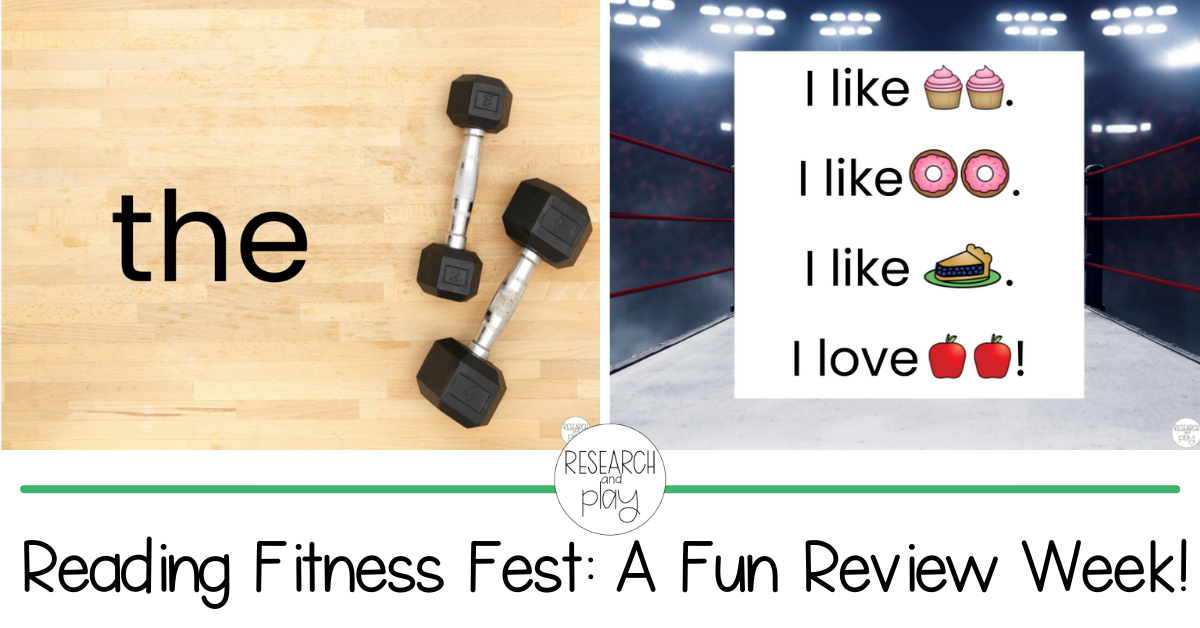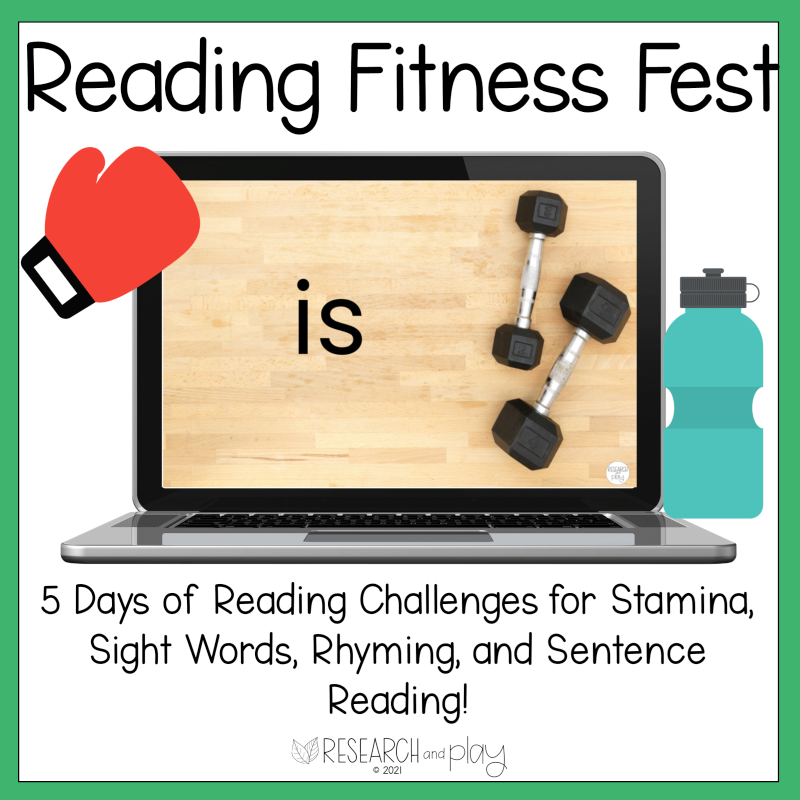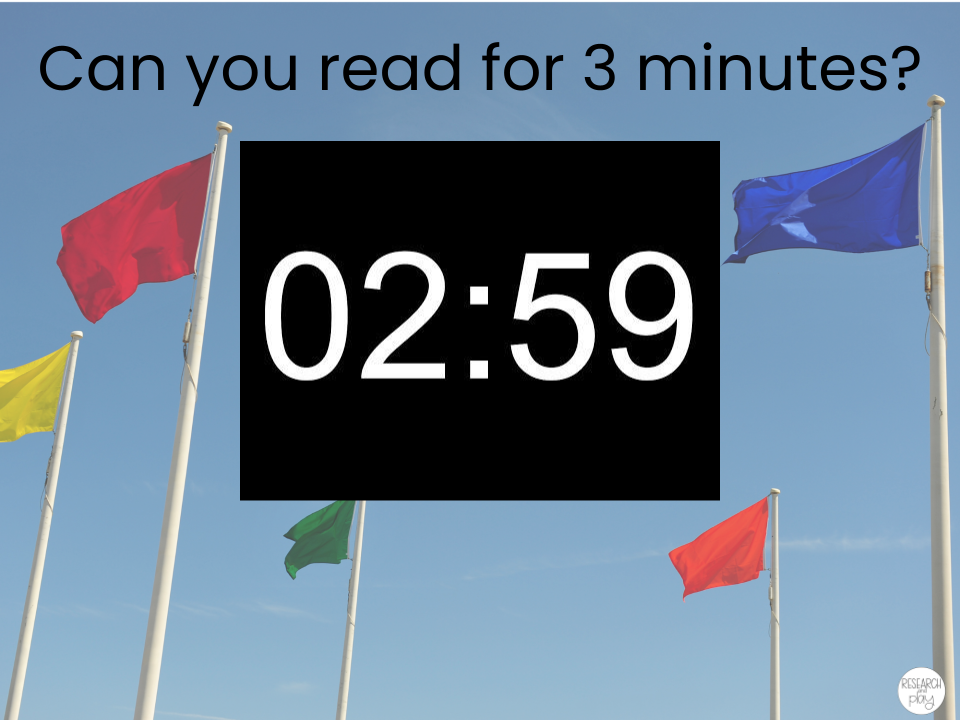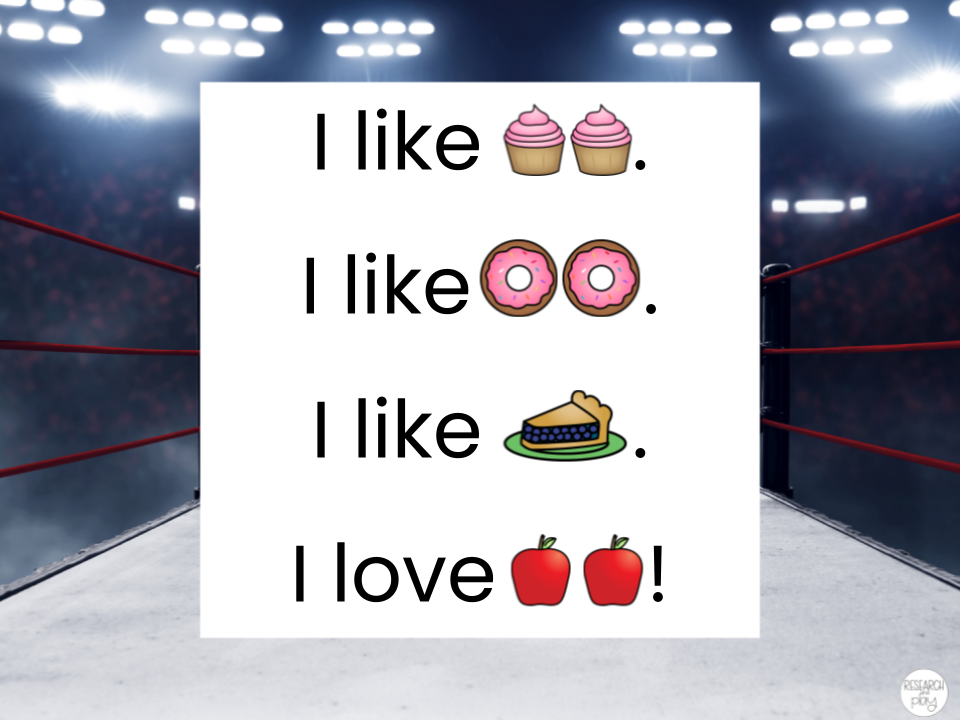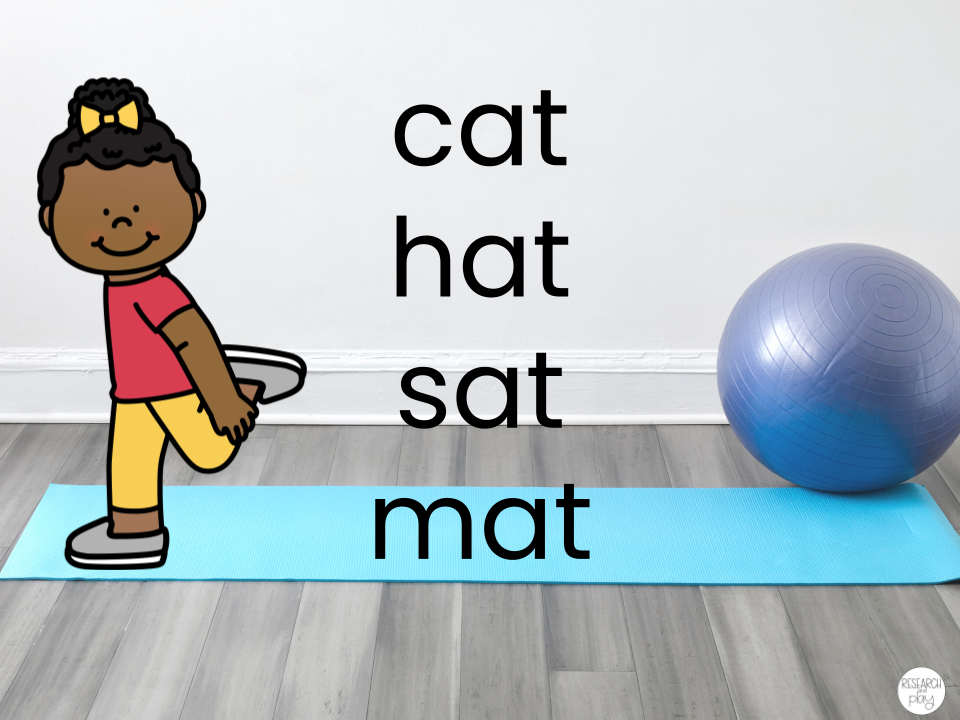There’s usually a point in the school year when we need to slow down and check in with how students are managing their reading strategies. After explicit teaching and modeling of strategies, I sometimes have a habit of pushing ahead to the next unit. This past year during distance learning, I saw the obvious need to take some time between units and check in with some of the strategies we’d been diligently working on. Reading Fitness Fest was my “try anything to get kids engaged virtually” approach, and it worked so well! My students were super engaged, I had fun teaching it, and we continued to use the activities for fun review once we returned in-person.
Activities for a week of review
Reading Fitness Fest was done over the span of one week, and every day included a different activity. This review was sports-themed and focused on getting kids active while reviewing reading strategies. Here’s the breakdown of how I set it up (it’s minimal) and what each day includes:
Setting Up
Since most of what we need is just displayed on our whiteboard via Google Slides, there are very few materials that students need besides some books on the first day. To prepare, I made sure to have some sports-themed accessories to really play into the fitness aspect of the week. I would wear a sweatband on my head, a whistle around my neck, and a jersey/sports shirt.
To begin each day, I would play the intro to “Eye of the Tiger” and would stretch! The sillier, the better. I’d start talking to the kids like I was their coach, encouraging them to stretch their bodies and get their brains ready to work! I said that even though we usually think about exercising our bodies, our minds need to exercise, too, and that this week we would be focusing on keeping our reading brains fit and in shape!
I had the Google Slide decks displayed and ready for each day once we finished our stretches. And that’s it! Here is the complete resource of what I used with detailed directions for each day!
Day 1: Reading Warm Ups
This activity focuses on reading stamina. Throughout the year, I continue to push my students towards longer, sustained focus on their books. We talk about stamina in terms of how we focus during reading: eyes are looking at the pictures, minds and mouths are sounding out and reading the words, and taking time to stop and think about what we’re reading. During reading warm ups, students are shown timers in various lengths: 3 minutes, 5 minutes, and 10 minutes. I challenge them to read their books for those lengths of time, celebrating between each timer!
Day 2: Sight Word Squats
This activity focuses on some of the common sight words we have learned at this point in the year, about two-thirds through the year. The words are not based on one list but are words that appear on most of them (Dolch, Fry, Units of Study, etc). We talk about how some words show up often in books, have tricky sound patterns we need to learn, or can be helpful to remember. During sight word squats, a sight word appears on screen for a few seconds. We all say the word aloud and squat, then a new word pops up. There are 25 words total.
Day 3: Sentence Sprints
This activity gets your heart rate up! Fluency is the main strategy we practice on this day. Using sight words and CVC/easy-to-sound-out words, students practice reading a sentence with fluency. They also have to watch for the ending mark to help them with expression! During sentence sprints, a simple sentence appears on the screen. We read it while running in place as fast as we can! After a few seconds, a new sentence appears. There are 15 sentences total.
Day 4: Pattern Break Boxing
Being able to use patterns in texts is a strategy we work on from mid-year on. Many leveled texts use patterns at the A/B level, so being able to easily recognize that pattern helps students read with fluency and confidence. But, as we begin to notice, the pattern usually “breaks” at the end of the book! This activity helps us watch out for the break in the pattern at the end of a set of sentences. During pattern break boxing, a set of four sentences with emojis appears on the screen. The first three follow a sight word pattern (ex: I like…), but the last sentence breaks the pattern somehow (ex: I love…). While students read the sentences aloud, they box each word! There are 7 sets of sentences total.
Day 5: Rhyme and Reset
Arriving at the end of our Reading Fitness Fest, we’re ready for some stretching and cool down. One final strategy that we review is reading words within a word family. This skill helps students recognize that when they know a sound pattern in one word (-at in the word ‘cat’), they can use that to read other words with the same sound pattern (mat, rat, bat). During rhyme and reset, students see a set of four words in the same word family along with a picture of a stretching pose. They do the post and read the words, then the screen switches to a new set of words. There are 7 sets of words total.
There you have it, Reading Fitness Fest! We did this both virtually and in-person, and it was a hit each time. This made for perfect review towards the middle of the year and again towards the end. You can grab the comprehensive resource with detailed instructions and try this with your class! Have fun!

